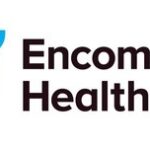 The old joke that the only thing that never changes in a hospital is its address has never been truer. New delivery care models, such as urgent care centers and patient-centered medical homes, are offering coordinated care and changing where patients are treated. Data-driven best practices and compliance to new regulations are constantly being integrated into operations. While technology will continue to offer innovations to create a healthier environment and reduce costs, it will always be up to the workforce to facilitate change.
The old joke that the only thing that never changes in a hospital is its address has never been truer. New delivery care models, such as urgent care centers and patient-centered medical homes, are offering coordinated care and changing where patients are treated. Data-driven best practices and compliance to new regulations are constantly being integrated into operations. While technology will continue to offer innovations to create a healthier environment and reduce costs, it will always be up to the workforce to facilitate change.
In excess of 3,000 associates work at the more than 60 facilities, medical centers and physician practices that are affiliated with Holy Cross Hospital in Fort Lauderdale. The Joint Commission seeks uniform adherence to standards, which requires keeping everyone informed and educated about the programs that are in place.
At Holy Cross, information about our green initiatives as well as patient and workplace safety is part of every new associate’s orientation. When a new physical location is added, the associates there receive a site-visit orientation. Every department has an appointed recycling specialist and several associate activists working throughout the hospital help promote waste-reduction efforts.
Our associates are at the heart of many of our programs. A formal group of associates featuring representatives from each department, dubbed the Green Team, meet regularly to pursue a mission of continuous improvement for recycling and the identification of new areas of opportunity.
One successful initiative was switching to china plates and silverware for dine-in service. This has kept countless foam plates and bowls, disposable cups and lids and pieces of plastic silverware from a landfill.
Currently the waste stream at Holy Cross consists of 30 percent of the total waste being recycled while “red bag” hazardous medical waste accounts for only nine percent.
A few years ago, the hospital removed the trash incinerator reducing energy costs and our carbon footprint. We utilize waste compactors and single stream recycling where plastic, glass, paper and other recyclable materials may be comingled. We also recover silver from old radiology films, reprocess single-use items, reuse wooden skids and paper, and recycle cardboard, paper, toner, printer cartridges and more.
Reducing pharmaceuticals released into the environment is being accomplished through a Universal Pharmaceutical Waste Management program and by minimizing packaging materials to reduce waste.
Since 2008, the reusable sharps container program, in which a vendor picks up filled containers and returns them emptied and cleaned, has drastically reduced the hospital’s carbon footprint:
• 1,168 pounds of plastic and 56 pounds of cardboard has been kept from the landfills
• 633 pounds of CO2 emissions were prevented, equal to 35 gallons of gasoline
To reduce toxins and provide a healthier environment for patients and associates, we implement new technology and also rethink how we can improve upon what has been done in the past.
Holy Cross now utilizes two cleaning systems to control germs in the hospital; which are the Xenex Robotic devices that emit full spectrum bursts of light to quickly sterilize rooms and reduce pathogens such as C. Diff and MRSA. The use of the Ultraviolent Backlight inspection, which is used to detect the presence of trace evidence in forensic investigation, is used to check the 12 high touch areas within a patient room.
In the new upgrading of our maternity unit, we chose floors that can be cleaned with an environmentally-friendly cleaner and which do not require waxing or polishing. In other areas of the hospital we use machines that do not require harsh strippers to clean the floors. Fixtures and materials are being replaced with those made of copper and stainless steel to reduce the need for bleach to eliminate germs.
Through constant examination of the environmental impact of all operations, Holy Cross has created initiatives that benefit both the environment and the bottom line. These programs often result in cost savings when energy usage can be reduced, the need to purchase supplies eliminated and the lifecycle of supplies and other items extended through reuse or recycling.


























